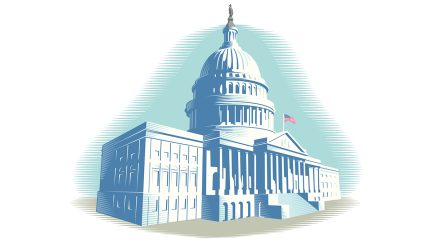Never miss a story — sign up for PLANADVISER newsletters to keep up on the latest retirement plan adviser news.
The ‘Rothification’ of Retirement Plans: Opportunity and Complexity
Congress in 2001 added section 402A to the Internal Revenue Code to allow 401(k) plans to include a “qualified Roth contribution program” pursuant to which participants could designate their elective deferrals as Roth contributions beginning in 2006. In 2022, Congress amended the IRC to significantly expand the likelihood that plans will include Roth features. In doing so, Congress substantially contributed to the “Rothification” of such plans. Congress also provided advisers and their clients with excellent tax planning opportunities, while also creating plan design, compliance and administration complexities.
Congress first introduced the concept of Roth contributions in the Economic Growth and Tax Relief Reconciliation Act of 2001. This was a novel concept at the time. For decades prior to EGTRRA, plans could allow for the availability of after-tax contributions. A participant that made such contributions would currently pay tax on the contributions but defer taxes on investment earnings until distribution. However, Roth contributions were substantially different. The participant could elect to pay taxes on the contributions in the current year, but never have to pay taxes on the investment earnings on qualified distributions.
After EGTRRA, the big question for plan sponsors and their advisers was whether to amend the plan to allow for Roth contributions and, if so, how to objectively communicate the benefits of Roth contributions versus pretax elective contributions. Plan sponsors also had to implement administrative procedures with the help of their service providers to assure the plan complied with section 402A and applicable regulations and guidance. On the other hand, participants and their advisers needed to determine whether some or all of a participant’s elective deferrals should be designated as Roth contributions. Looking back, the decisions that plan sponsors and participants needed to make and implement after EGTRRA were not as complicated as those that will need to be made in the coming months with regard to Roth features.
On December 29, 2022, the Congress enacted the Consolidated Appropriations Act, 2023, which included amendments to some of the IRC and the Employee Retirement Income Security Act provisions applicable to retirement plans. These provisions are often referred to as “SECURE 2.0” because they are a follow up to the retirement-related provisions in the Setting Every Community Up for Retirement Enhancement Act of 2019. SECURE 2.0 provides for substantial changes as to how plan sponsors and participants may utilize Roth features in their 401(k) plans and other retirement plans.
SECURE 2.0 amended the IRC to allow for defined contribution plans to include emergency savings accounts with distribution provisions that are more permissive than with regard to other contributions. However, only Roth contributions may be made to the account. Additionally, SECURE 2.0 amended the IRC to require that all catch-up contributions made to a plan must be made as a Roth contribution unless the participant earns less than $145,000 in the prior year. Effectively, in order to have an emergency savings account or to allow catch-up contributions for any participant, the plan must include or be amended to include a qualified Roth contribution program. Thus, the IRC now incents plan sponsors to add Roth features to 401(k) plans, which was not the case when EGTRAA first introduced the Roth feature.
The IRC as amended by SECURE 2.0 provides further incentives to sponsors to “Rothify” a plan. A plan may be amended to allow participants to elect to have their employer matching contributions and nonelective contributions be contributed by the employer as Roth contributions. This is a substantial expansion of a participant’s ability to pay income taxes today in order to avoid all taxation on retirement benefits at a later date. The IRC also now states that amounts held in a participant’s Roth contribution account and related investment earnings are not subject to the required minimum distribution rules.
As the above summary highlights, SECURE 2.0 certainly has contributed to the “Rothification” of the 401(k) plan and other retirement plans. The changes to the IRC with varying effective dates will likely lead to many plan sponsors adding Roth features to a plan or expanding the availability of those features. However, it will take some time for this to occur as there are still open questions as to how the Treasury Department and IRS will interpret these provisions. Further, payroll providers, recordkeepers, sponsors and others likely will have to make substantial changes to their technology and policies and procedures in order to comply with the regulations and guidance yet to be issued. Finally, participants will need assistance to better understand the tax implications of these changes. As a result, legal, financial and other advisers in the coming years will likely be needed to help sponsors and participants navigate these issues.
You Might Also Like:

403(b) Plans Have Special Considerations When Complying with SECURE 2.0

Answering Questions About SECURE 2.0 Catch-Up Provisions

